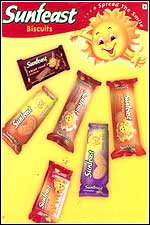Innovative BTL activities for FMCG companies
ATL- Above the line
BTL- Below the line
ATL are conventional medium like TV, Print ads, Radio etc. These days we have seen a new trend of companies not spending a lot on ATL as it is very expensive. Rather they are investing on BTL - Below the line activities. These are like giving coupons, road shows, buzz marketing etc. BTL are very cheap and cost affective and we will see in future a skewness towards BTL as it is cost effective.
Let us see some innovative BTL activities for FMCG companies.
1. Road Shows/ Activities in Malls: As Pacific Mall is very near to my home in Kaushambi, i frequently visit there to have a cup of coffee either Americano or Cappuccino. But what do i observe there is these small FMCG players having there stalls in the nooks of the Mall. They were:
a) ACT II Popcorns by ConAgra Foods Snack Foods Group: They organized different games there to involve consumers in Pacific.
b) SHIEF Soap for Women: They also had several games like - hitting the dart on ordinary soap (by this they send a message that Use Shief and not Ordinary Soap), throwing soaps in a box 3 to 4 meters away.. These all games awarded all the ladies and girls with Wrapped Shief Soaps. At the end they asked all the females to repeat their punchline of "Banaye Komal, Rakhe Surakshit"
I must tell you one thing that, they got a fabulous response.
2. Screens outside the Malls: I have seen screen just outside the Metropolitan Mall in Gurgaon. They have a series of advertisements on the screen. One has to pay for a month and your ad will be for some seconds after every 5 to 10 mins. I saw an ad of Whirlpool with Kajol and Ajay Devgan there. But i think this can work for FMCG products as well.
3. Retail Displays: You must have seen SugarFree packs in front of convenience stores. So the consumer is forced to see this brand first and them EQUAL brand. This is my observation. This is at a very low level. But now if you visit Big Bazaar, you will see brands of ITC like Aashirwas Atta etc displayed at strategic locations which increase its brand value and finally sales in long term.
I wrote an article "Marketing Analytic Techniques for FMCG Marketers" We will soon see these techniques in India soon.
4. Trials in Malls: What do you see when you go out to buy vegetables in Malls? I was in PRG's Spencer Hyper Mall to buy regular Tomatos and Patatoes. There this beautiful lady asked me to try a cup of new flavour of Nestle Coffee. Its taste was worth buying, but as i was busy in buying Onions i couldnt buy one pack for me. So experience Marketing is just not in Service Industry but in FMCG as well.
Do you guys have more BTLs for FMCG companies!!



















